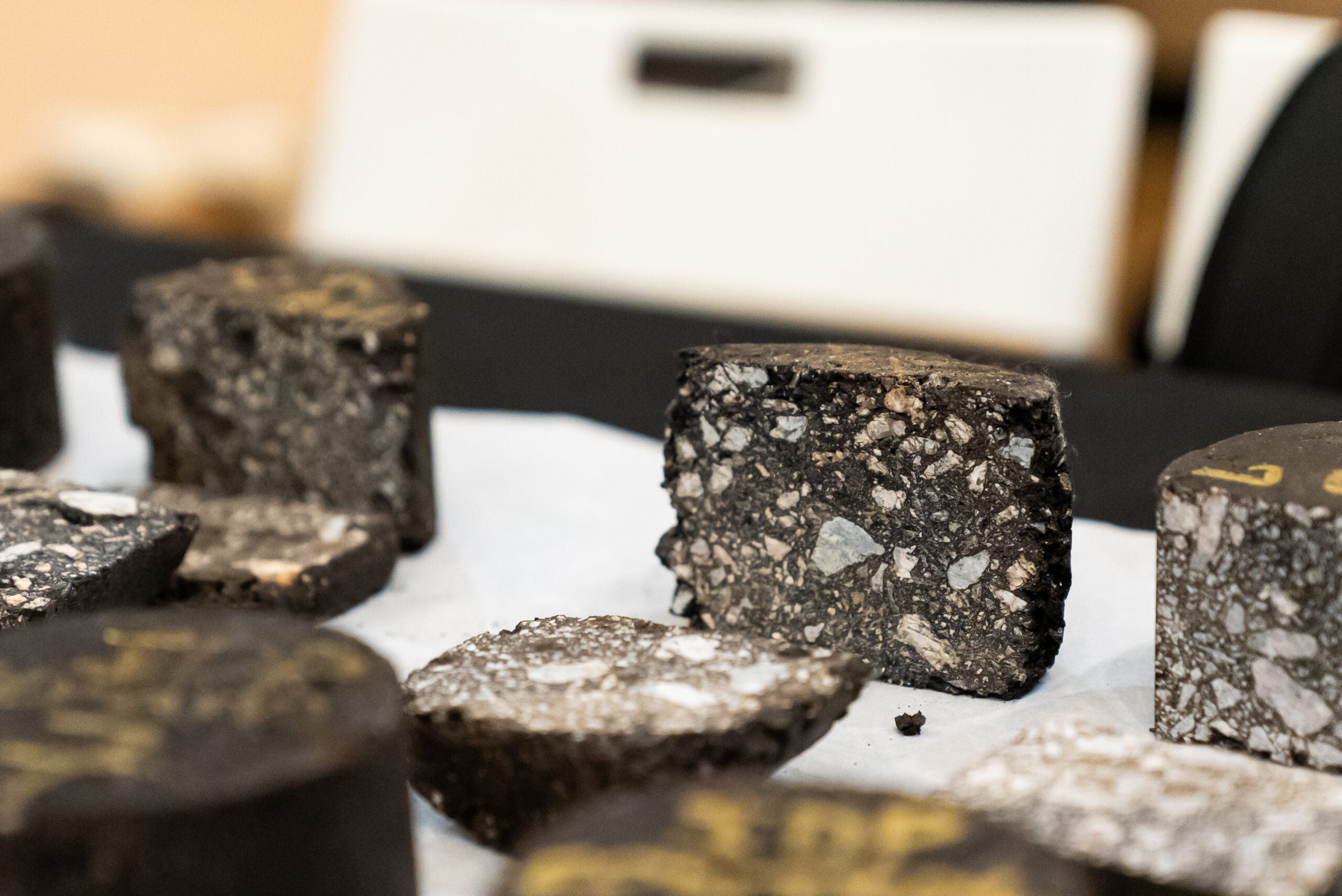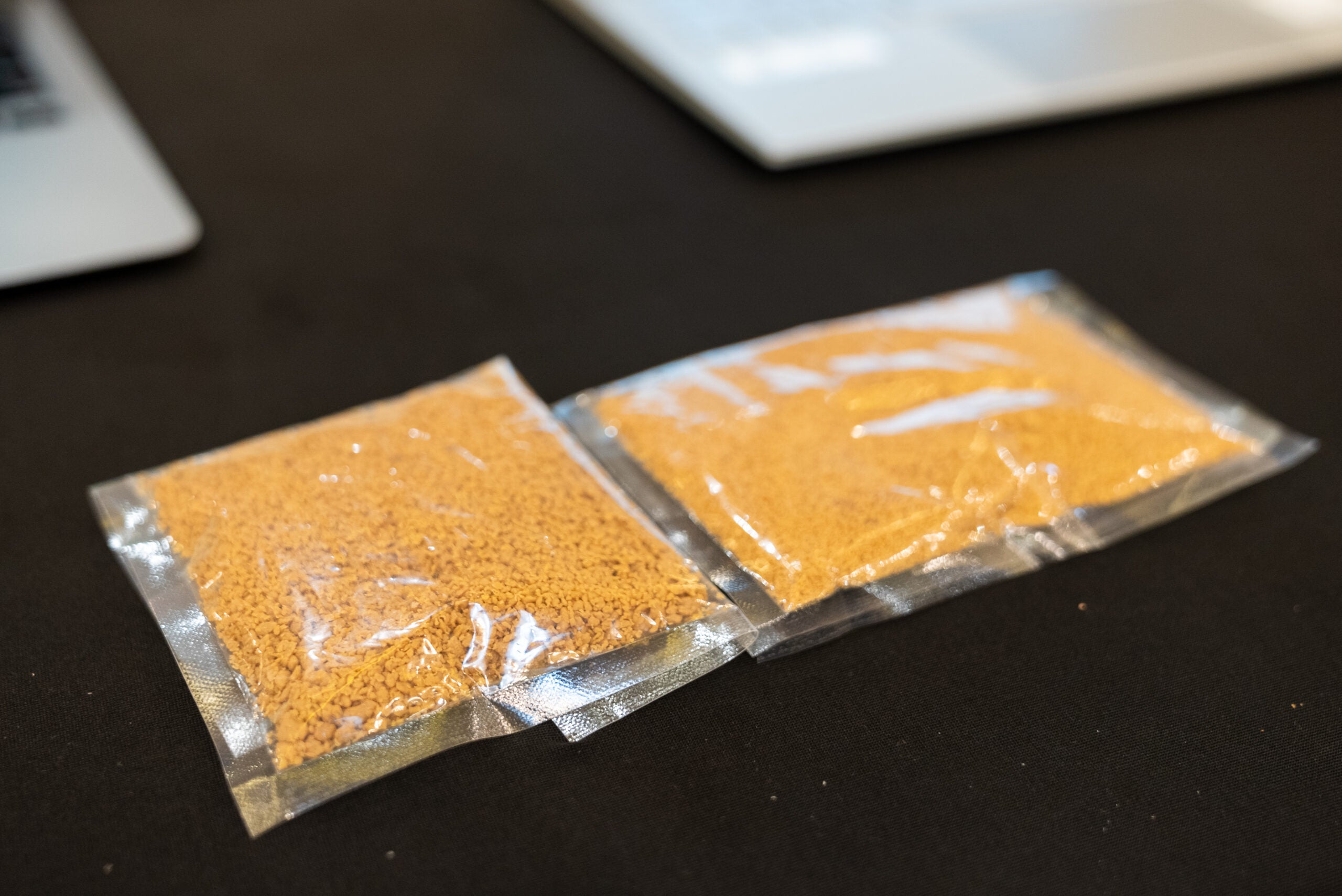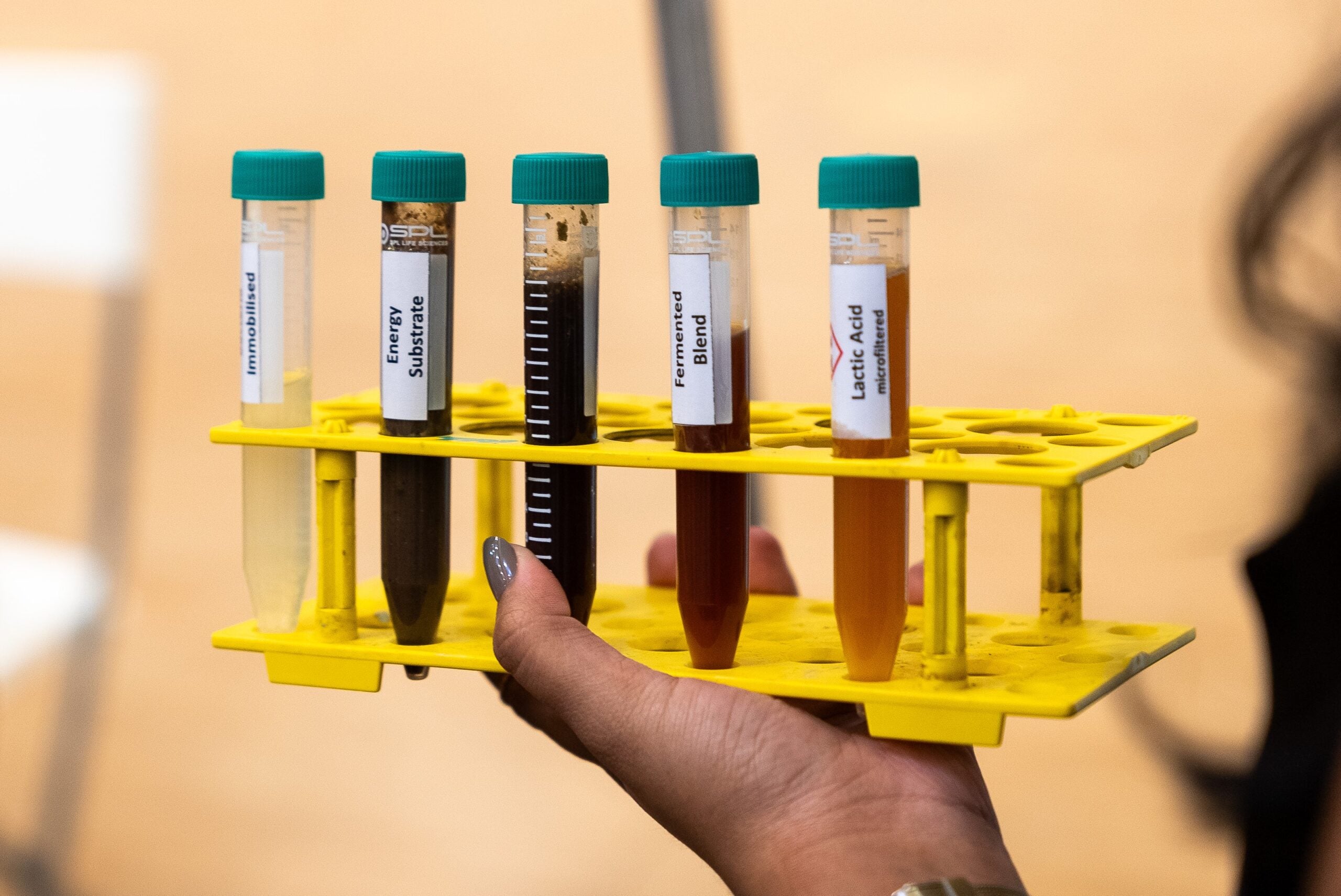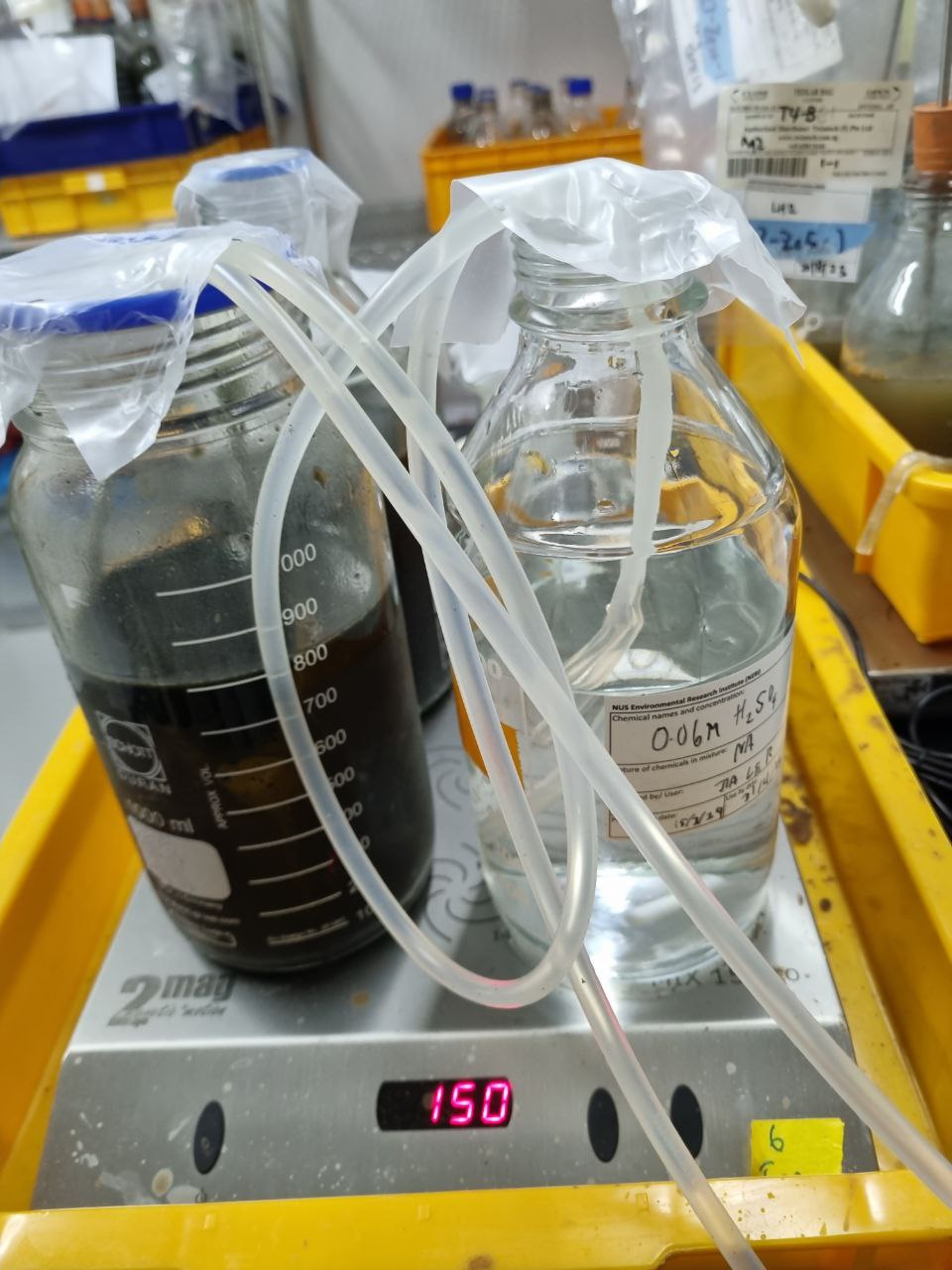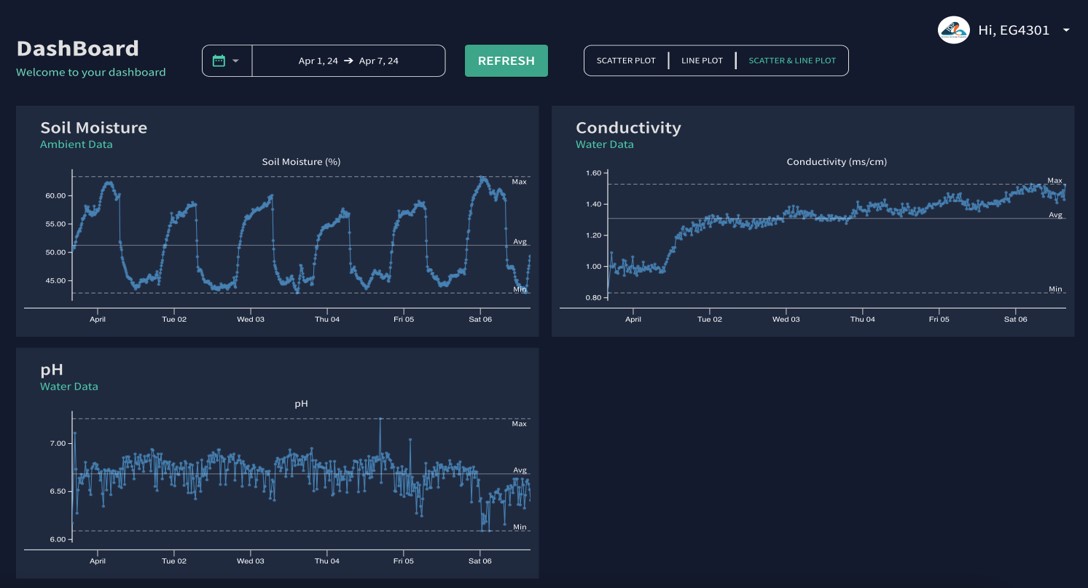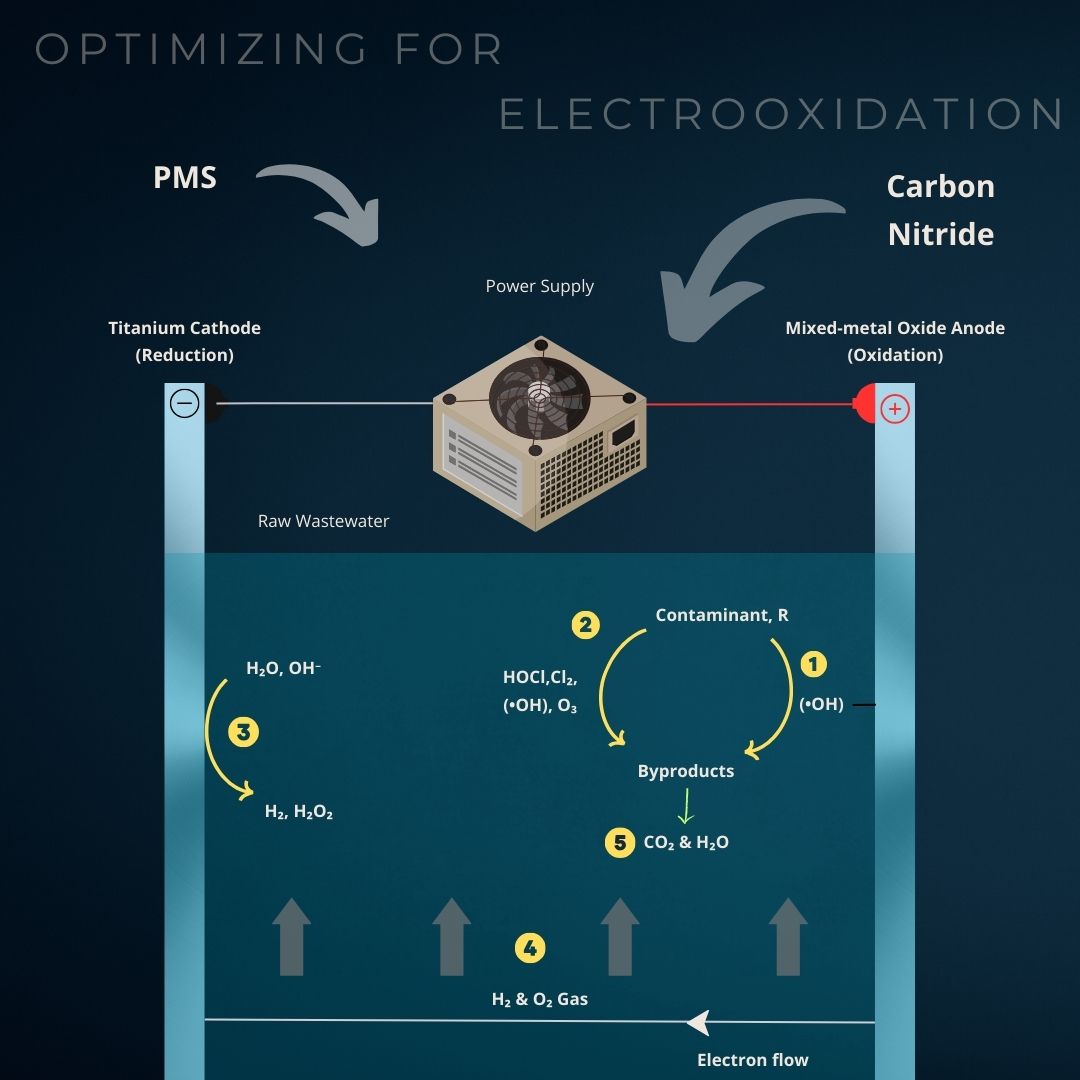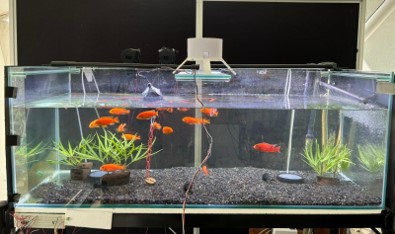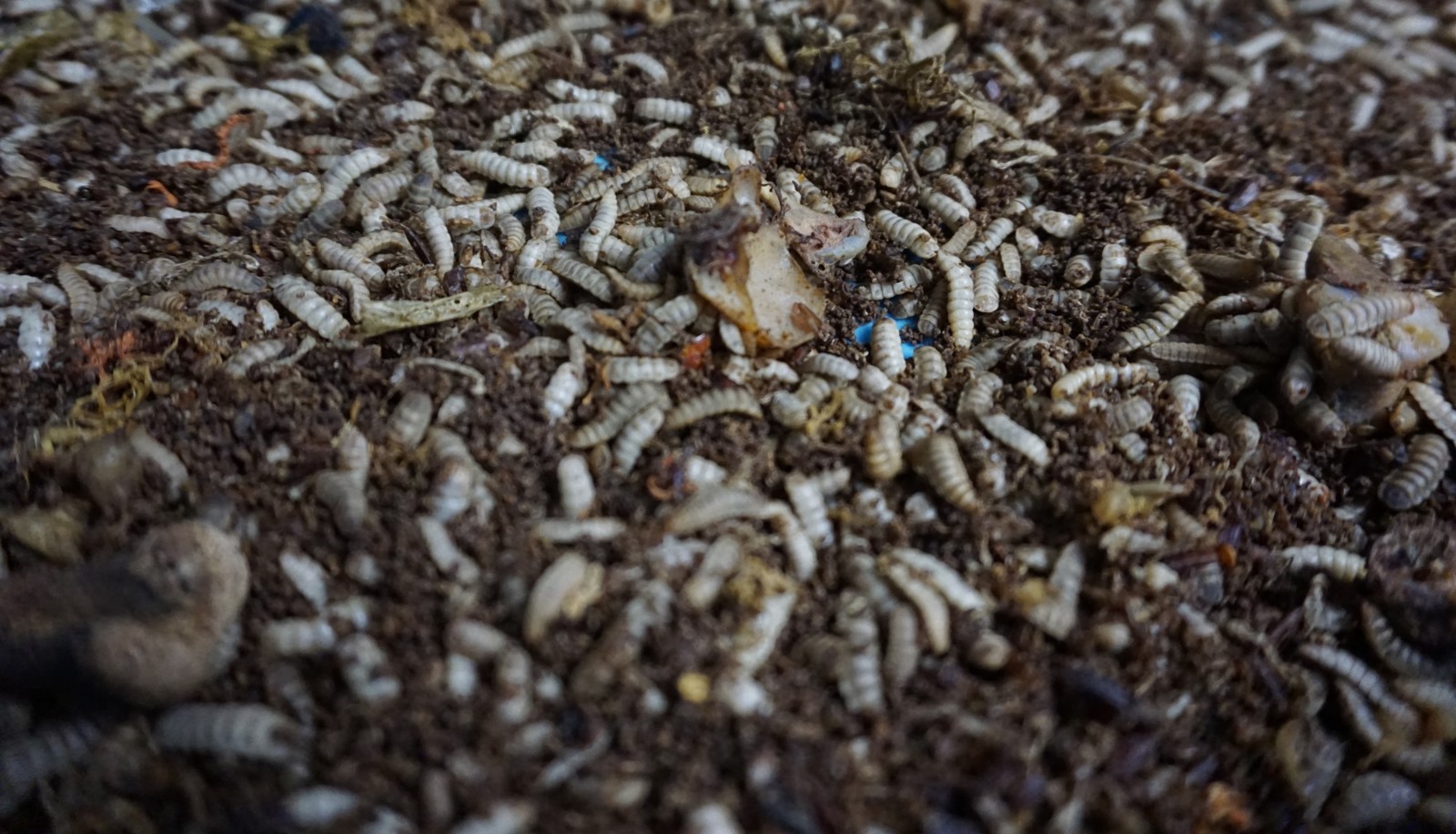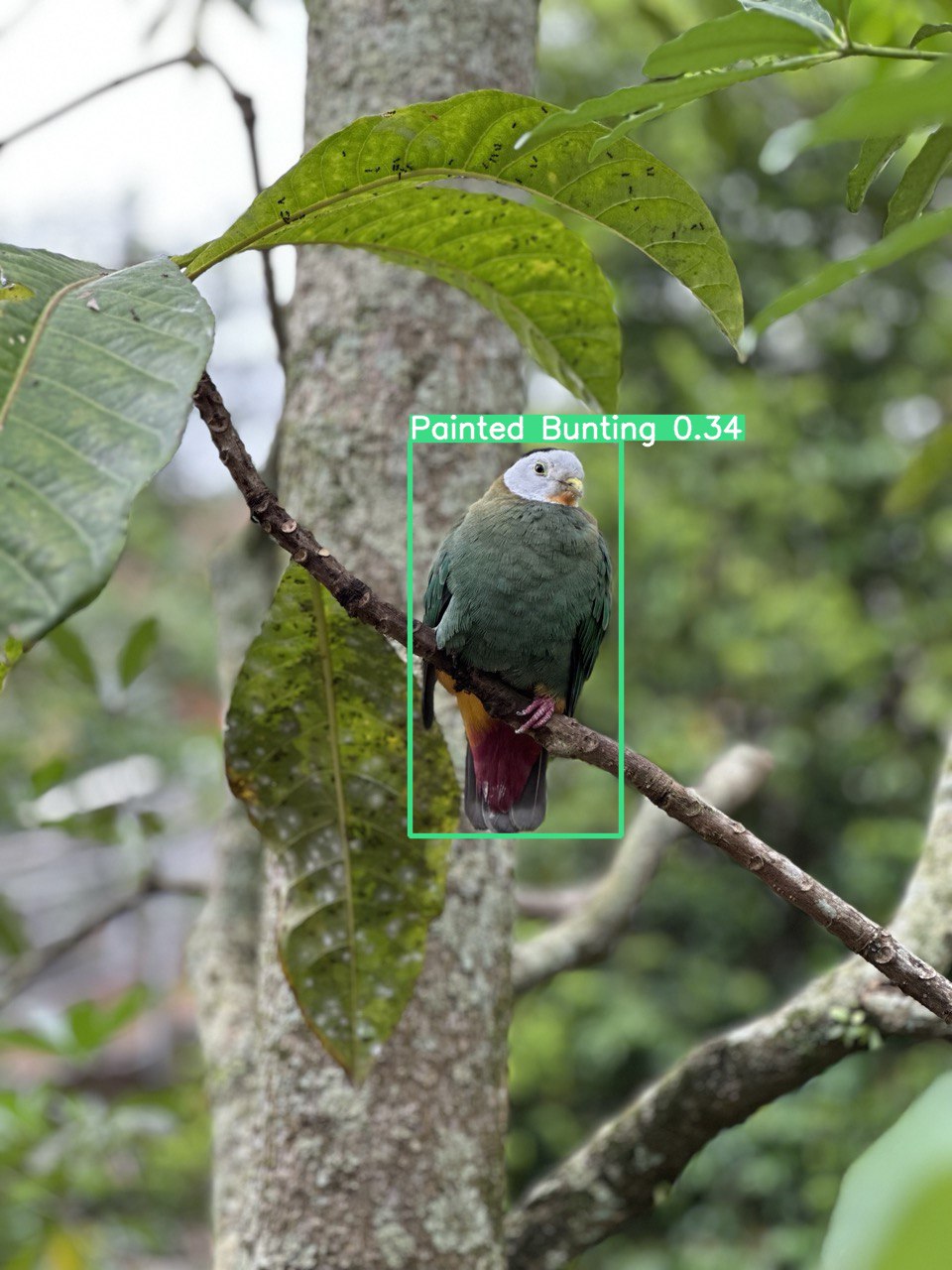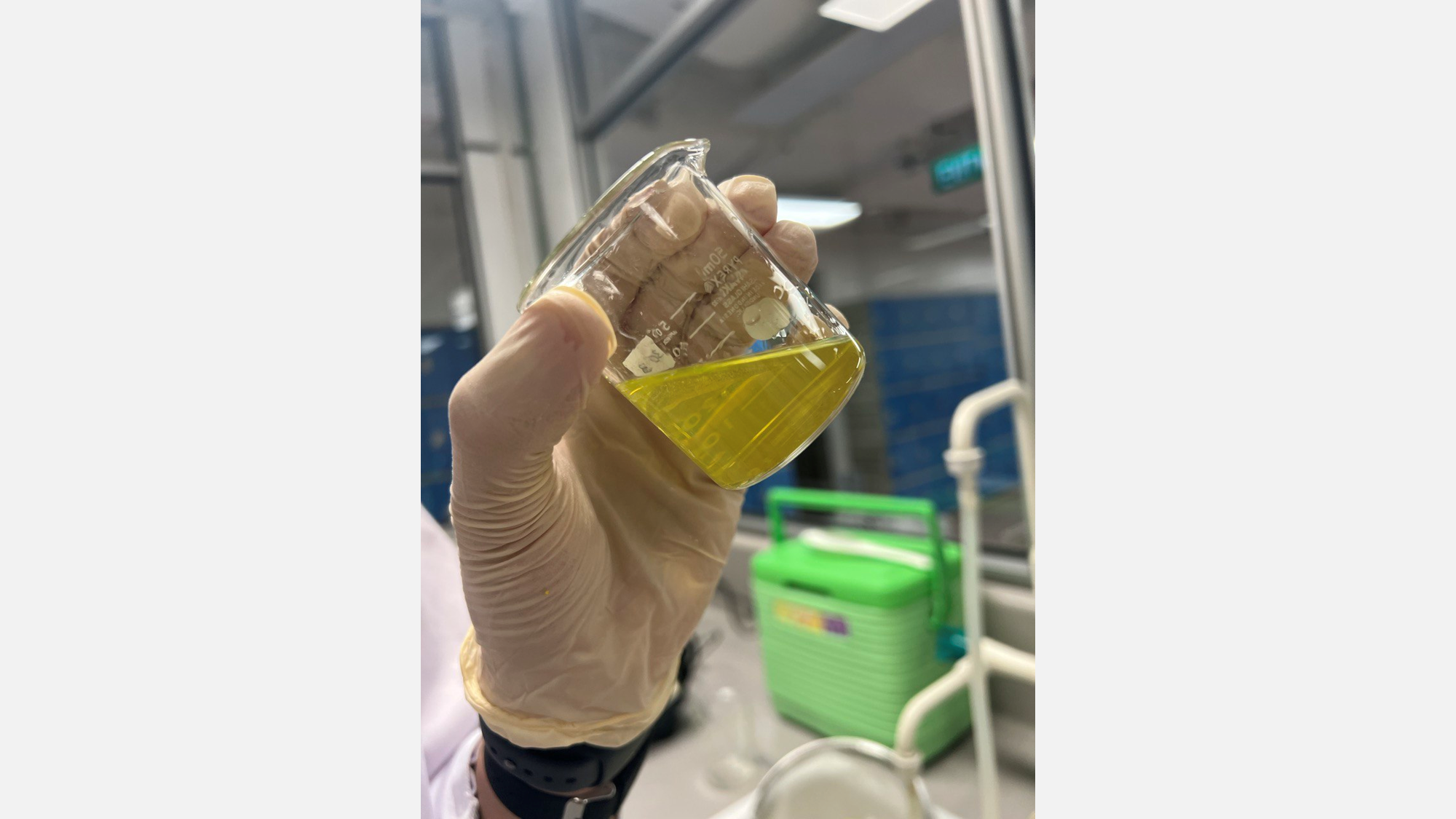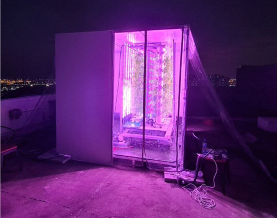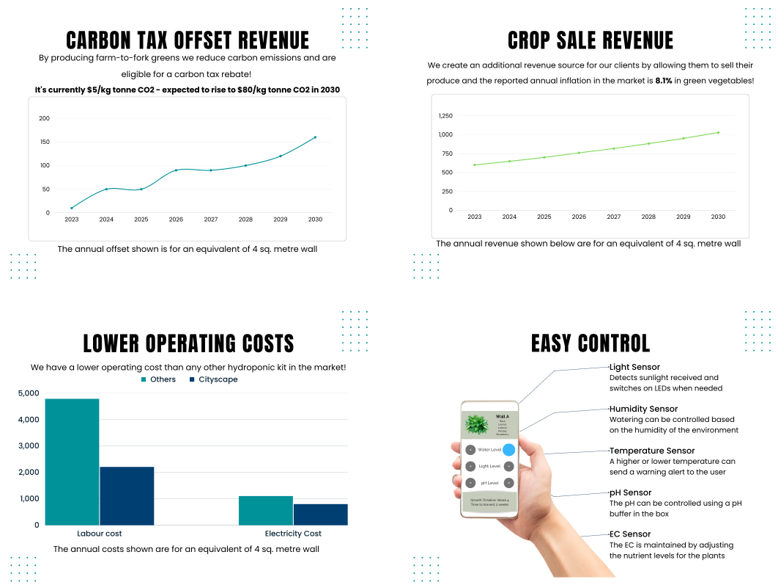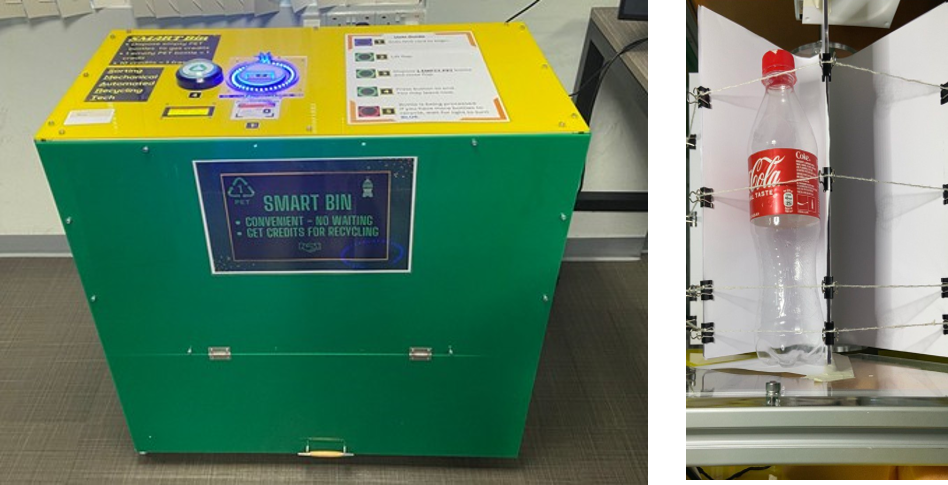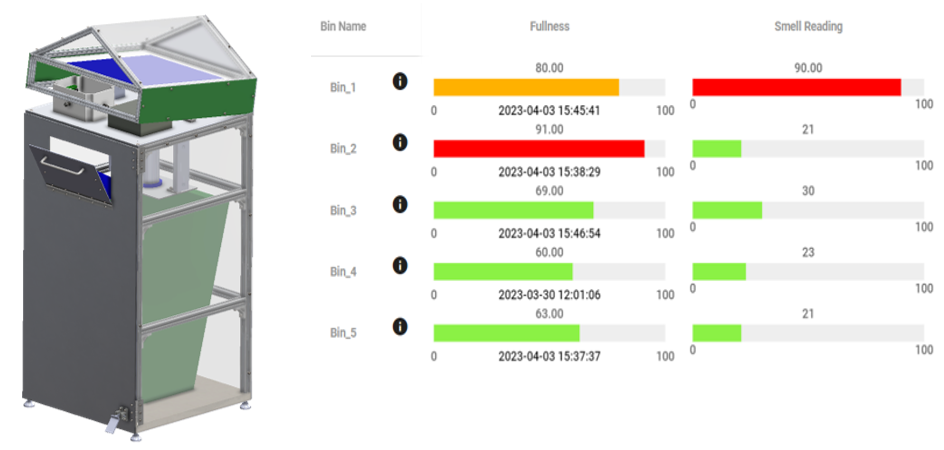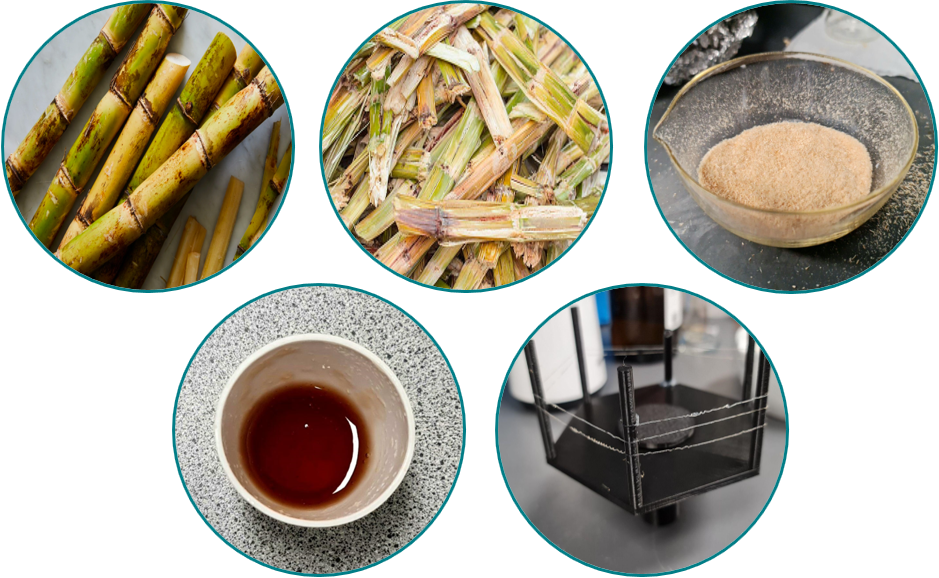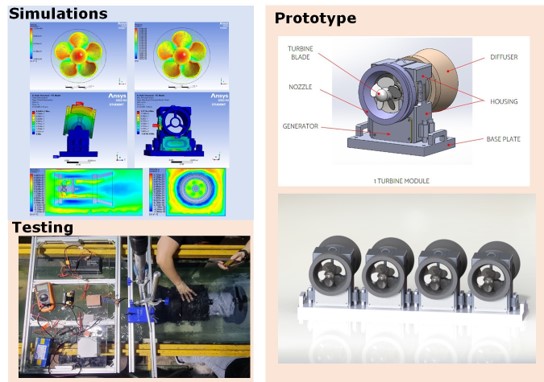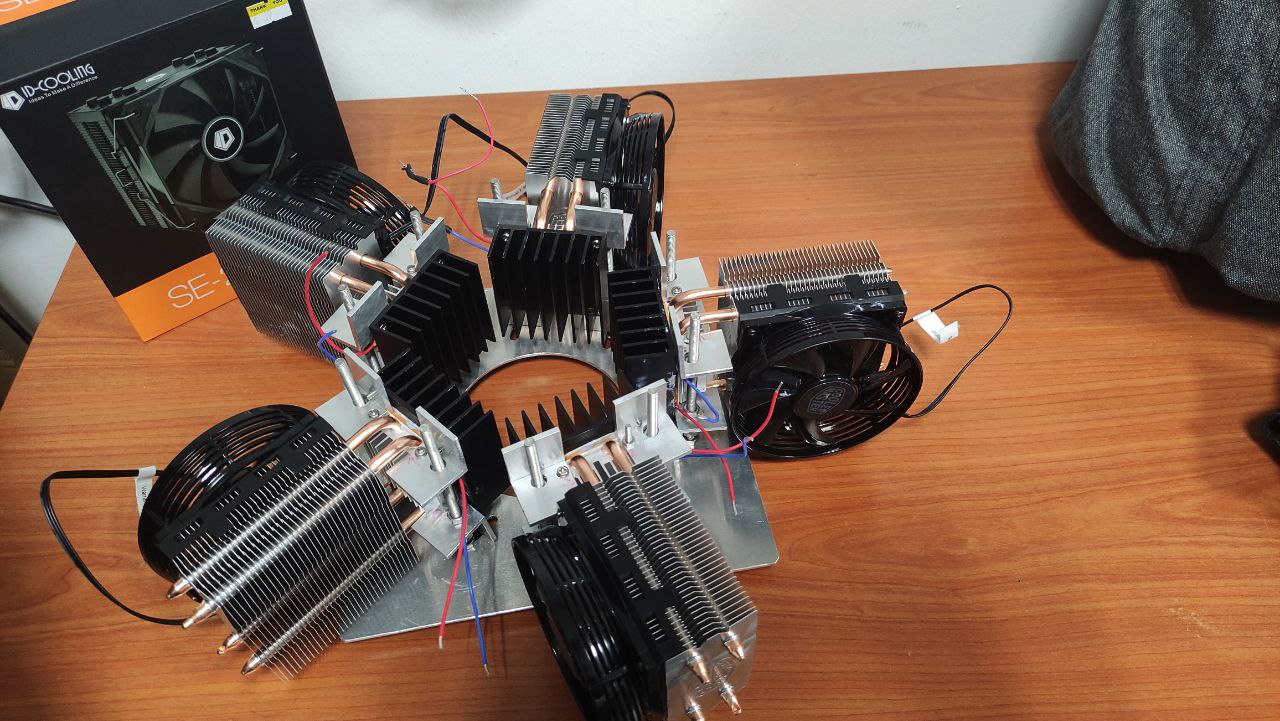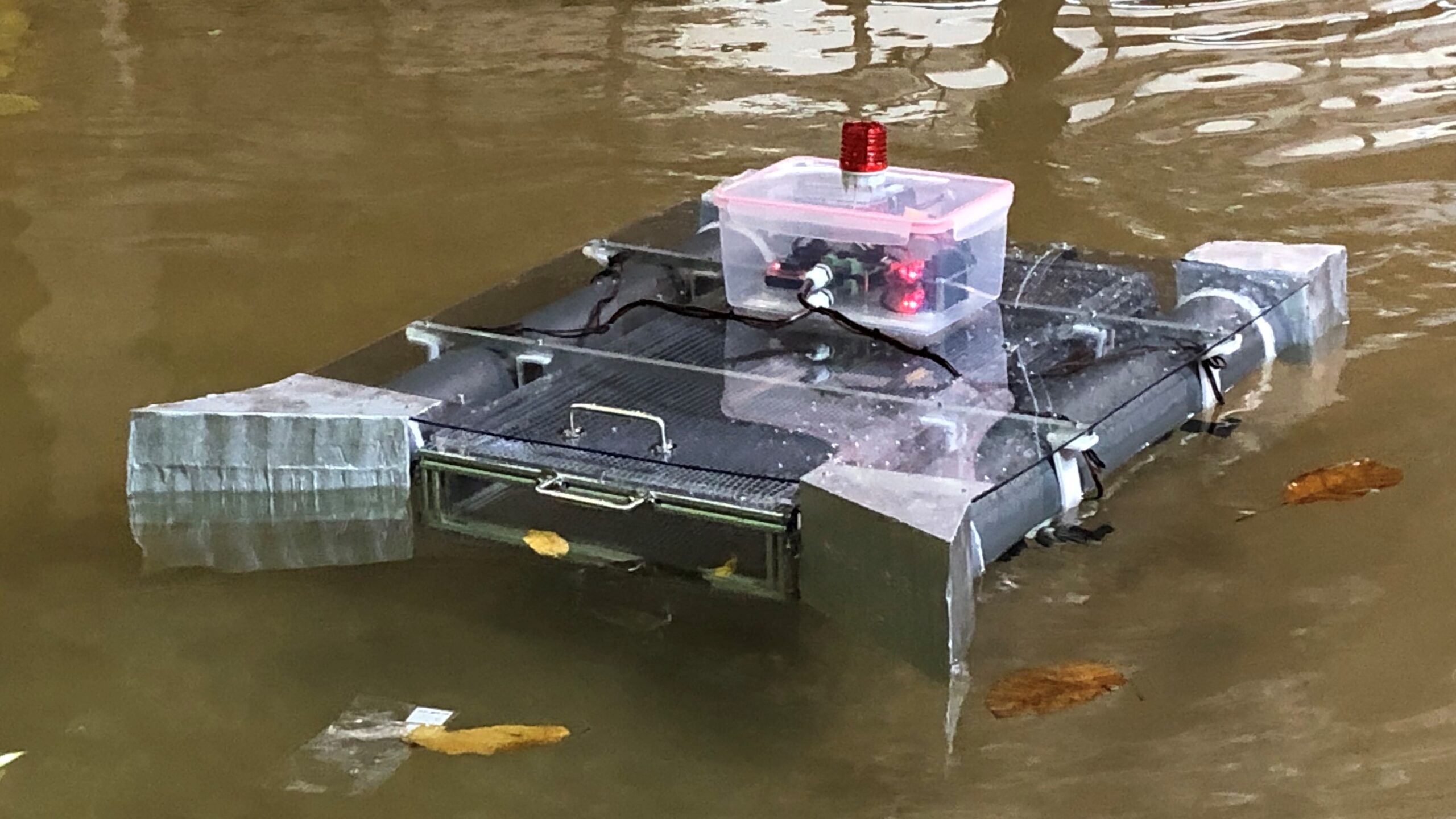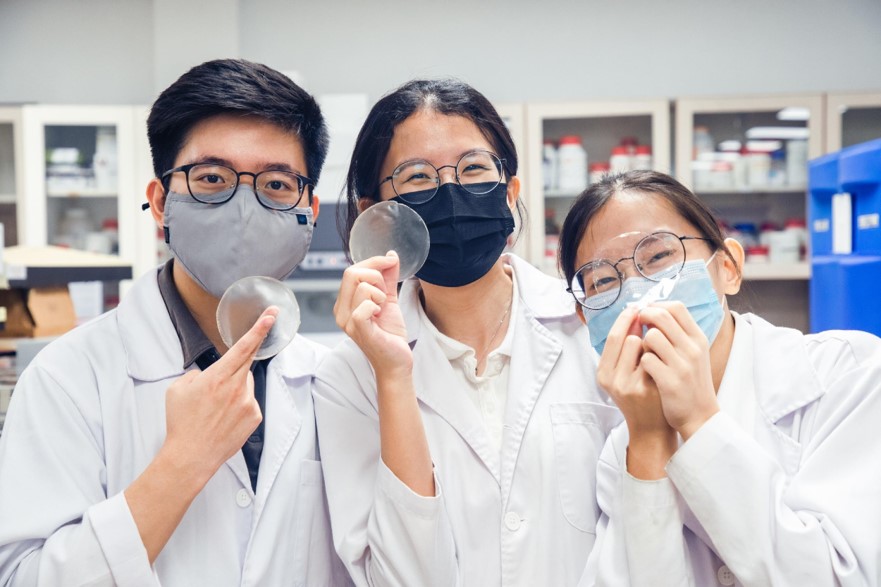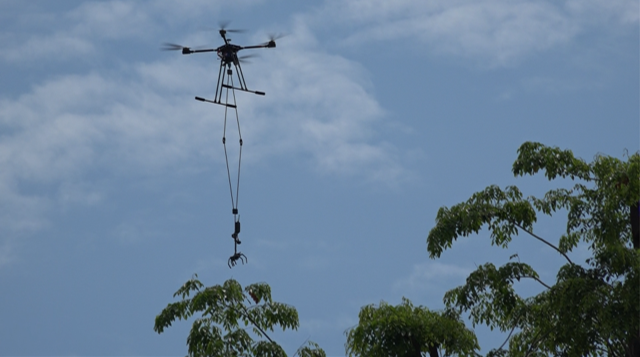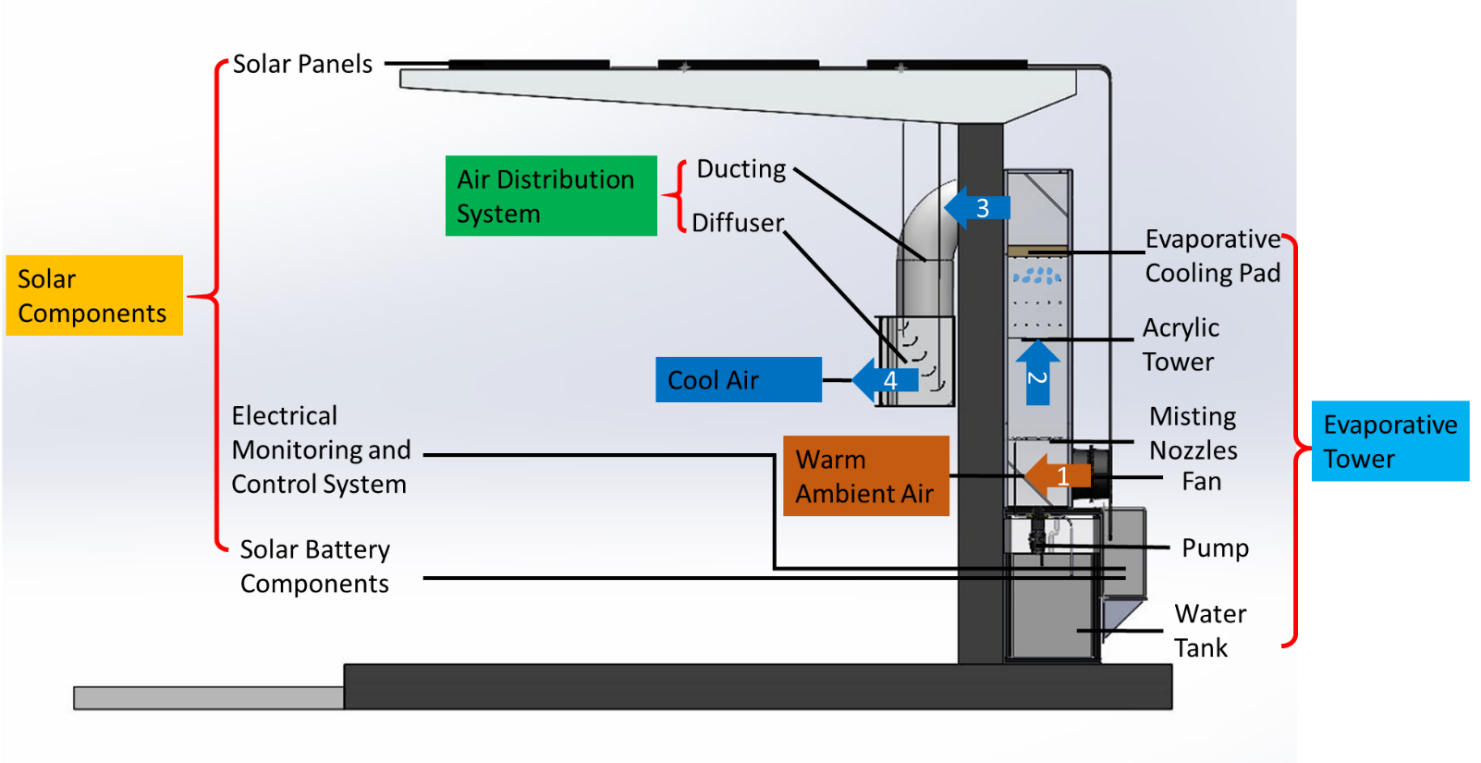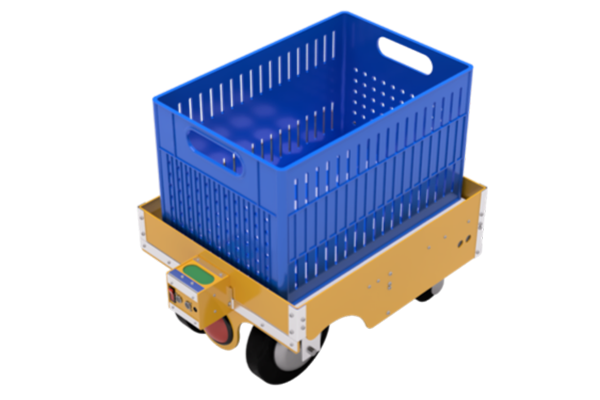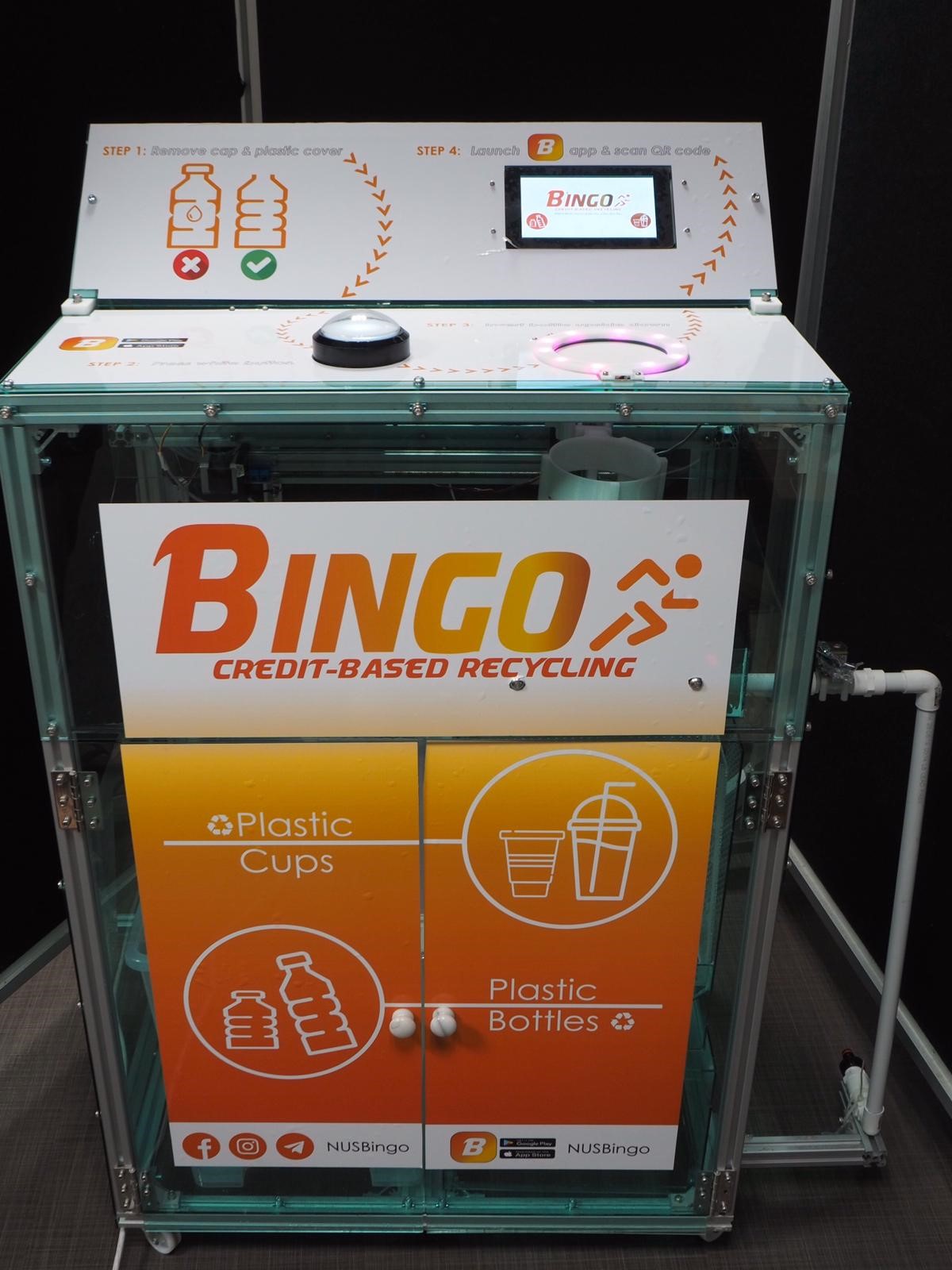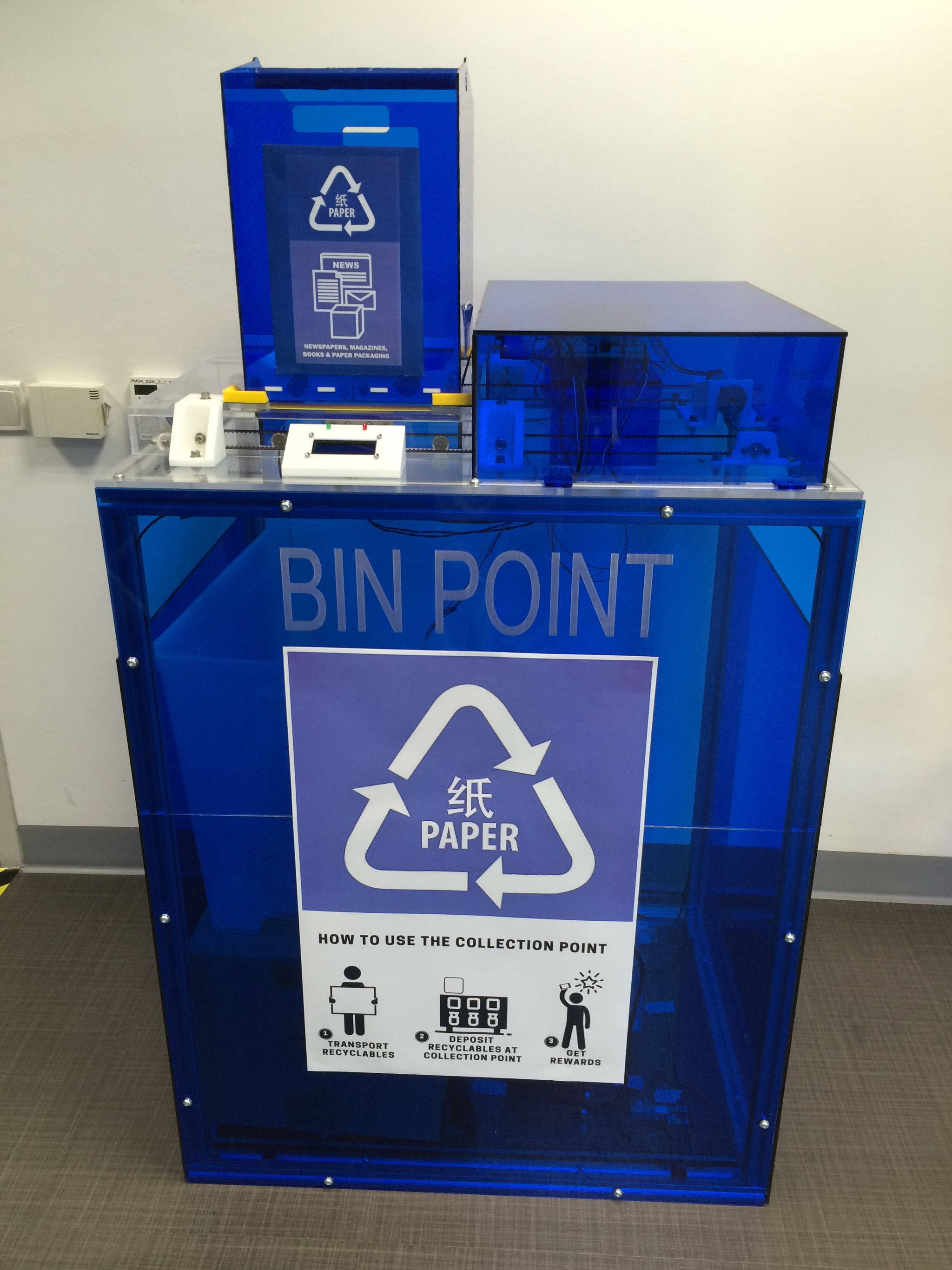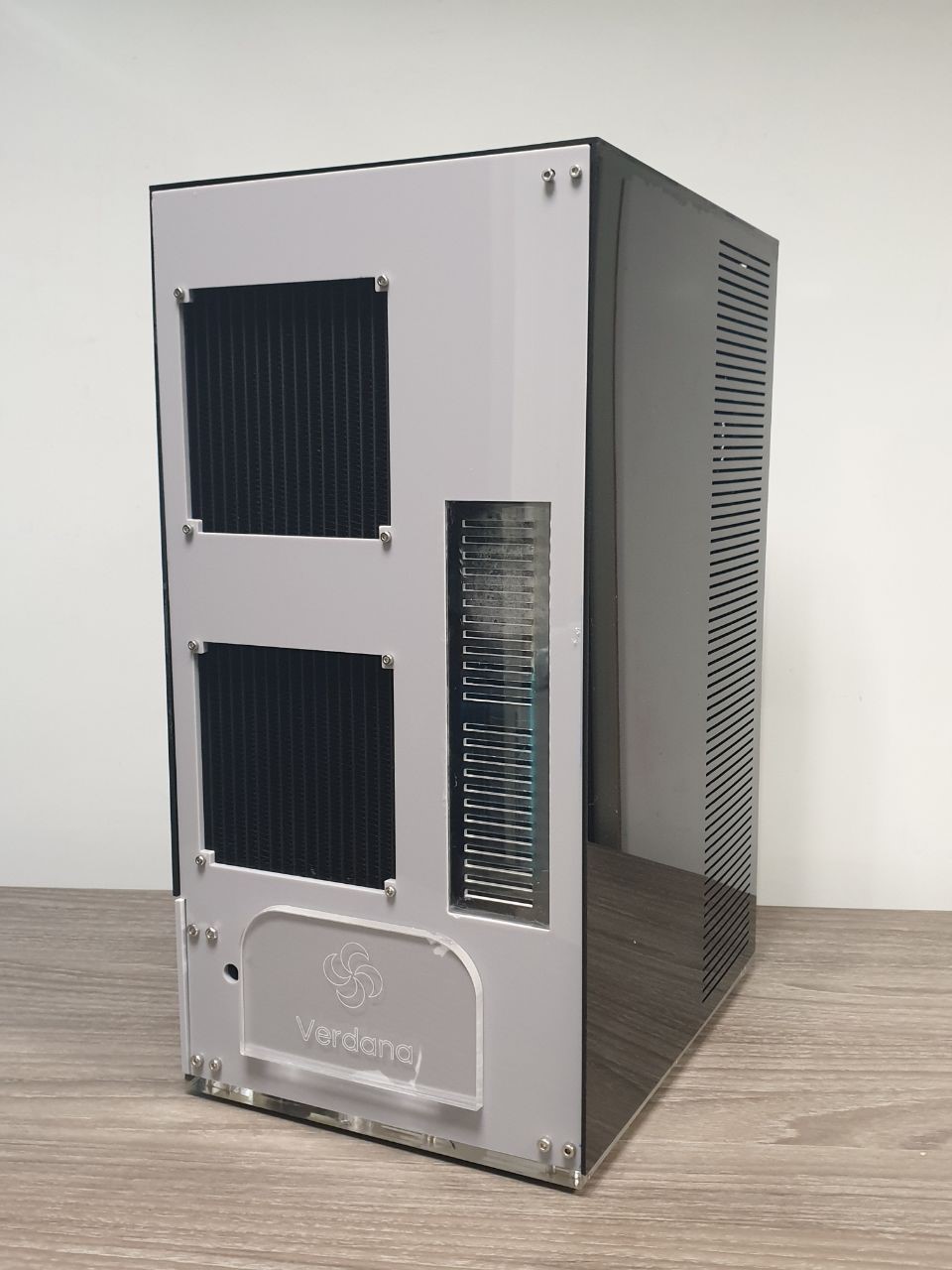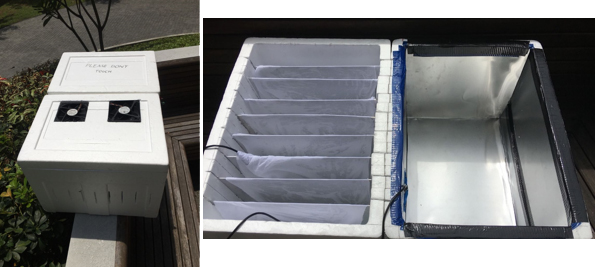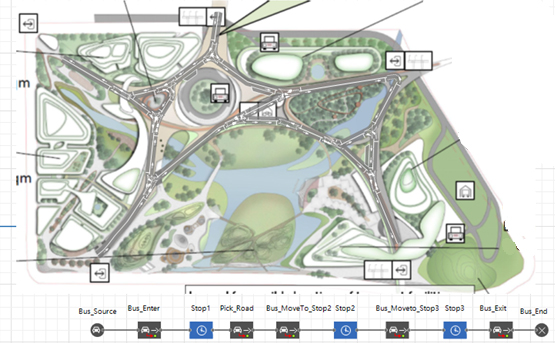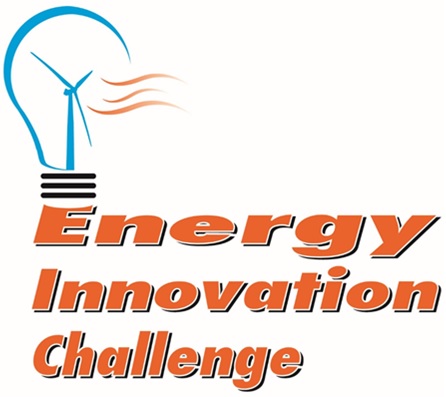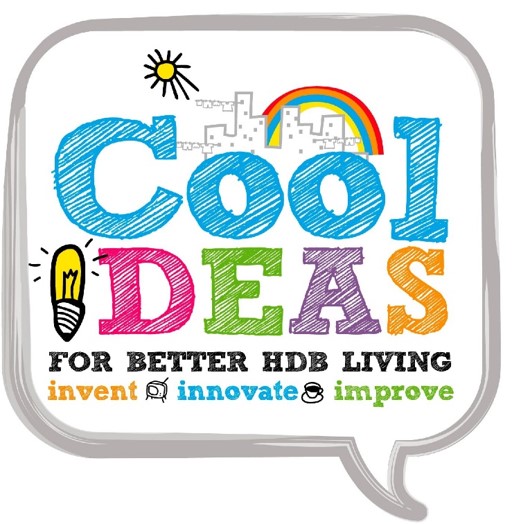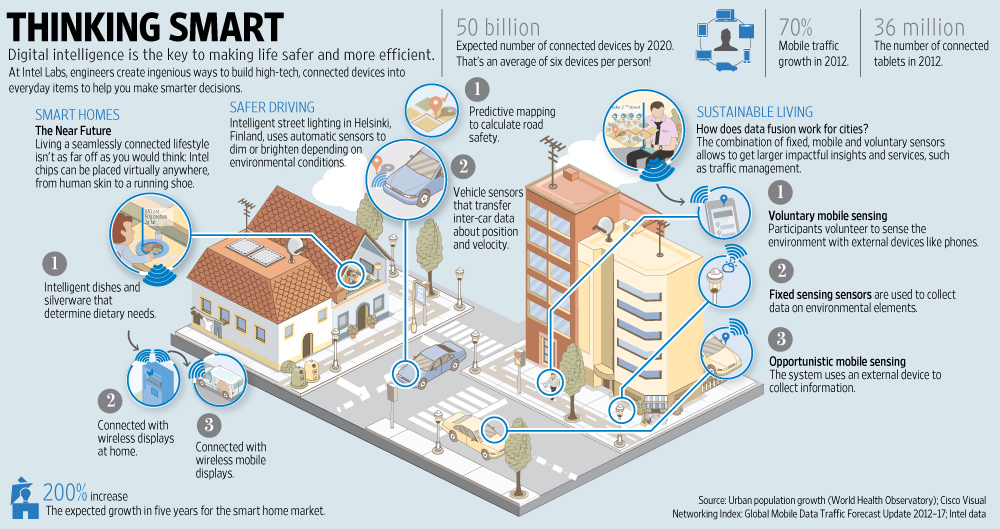Innovating for Sustainable Cities
Projects in this theme delve into the challenges of urbanisation and sustainability. They focus on improving liveability in the urban environment and management of limited resources such as water, energy, and land in an efficient and sustainable manner.
Asphalt pavements contribute to the Urban Heat Island (UHI) effect as they retain substantial heat and re-emit solar radiation well into the evening. In this project, we evaluated the feasibility of reducing the UHI effect by exploring the use of ceramsite as a substitute for coarse aggregates and glass as replacement for fine aggregates in the asphalt mix, and conducted lab-scale experiments to characterise the thermal and mechanical properties of various asphalt compositions.
Mycoprotein offers a sustainable alternative to animal based protein sources as it requires minimal land and water to produce, has a low environmental impact, and delivers high nutritional value. However, mycoprotein production currently relies on imported glucose, which undermines Singapore’s efforts toward self-sufficiency and food resilience. In this project, we successfully demonstrated a viable method to enhance Singapore's protein self-sufficiency by converting brewer's spent grain (BSG), an abundant local food side stream, into high-quality mycoprotein.
In this project, we conducted lab-scale experiments to determine the feasibility of using municipal food waste as feedstock to produce lactic acid. Overall, our results show that a relatively high conversion efficiency of municipal food waste to lactic acid could be achieved while reducing waste and carbon emissions compared to conventional methods. Our proposed process not only offers potential for reducing waste volume and carbon emissions but also presents a solution that aligns with the growing demand for sustainability in the chemical manufacturing sector.
Accumulation of ammonia during anaerobic digestion is detrimental as it inhibits biogas production. At the same time, production of ammonia from current processes is energy-intensive and contributes significantly to global carbon emissions. Thus, this project aims to harvest green ammonia from anaerobic digestate through the use of membrane extraction and resin absorption.
Green Doctors Programme seeks to build a circular economy for blister packaging by implementing a sustainable medical blister packaging recycling system in Singapore, helping to foster a more sustainable future for pharmaceutical waste.
In this project, we designed a scalable, compact, low maintenance system to unlock the potential of renewable energy. The system utilizes a bulb turbine housed within a nozzle-diffuser casing, designed for efficient underwater operation. Our prototype demonstrates the potential of harvesting useful energy from low-head flow conditions.
This project intends to mitigate over-fertilisation of arable soils, primarily in Southeast Asia, by providing smallholder farmers with an open source farm management system. This system maintains the soil quality while minimising fertiliser consumption, allowing for more sustained usage of rapidly degrading fertile land.
This project aims to develop optimised parameters for treating oily wastewaters and investigates various catalyst designs to achieve a more cost-effective method overall.
The aquaculture industry in Singapore is currently dominated by traditional coastal open-net fish farms that are faced with high operational costs, of which feed wastage due to inaccurate and inefficient manual feeding is a significant contributor. To address this problem, we developed an on-demand feeding solution that can be easily implemented and integrated within existing open-net fish farms to achieve accurate and efficient feed optimisation.
A significant proportion of municipal food waste in Singapore is presently incinerated in waste-to-energy plants with the incineration waste buried in the landfill at Pulau Semakau. This approach is unsustainable in the long run. To overcome this problem, we designed a smart reactor system for bioconversion of municipal food waste using black soldier fly larvae that is modular, easy to deploy, easy to operate and maintain, and has optimised conditions for the bioconversion process.
In this project, we aim to help Mandai Wildlife Reserve and NParks sustainably automate the monitoring of health and activities of animals in order to generate new insights to aid conservation efforts. Our solution employs a camera-based monitoring system, use of computer vision and artificial intelligence to detect and study birds, and visualisation of data to reveal trends and patterns.
Through our process, lactic acid is harvested from municipal food waste. In lieu of the more common anaerobic digestion process, our process yields greater economic value with the lactic acid product.
This project aims to turn trash to treasure by extracting Vitamin C from fruit waste such as orange peels that can be used as feedstock for various processes.
In this project, we designed a container farming system to provide farmers and cities with a seamless container urban farm system to maximise crop yield, which is easy to operate and can be integrated into any standard 20ft recycled shipping containers.
Hotels contribute high carbon emissions, hindering their sustainability goals and Cityscape Farms' automated growing system offers on-site food production with a farm-to-fork concept helping hotels reduce carbon emissions.
This project aims to lower the contamination rate within PET bottle recycling bins from 27% to 5% by introducing a smart bin that helps to passively educate users to recycle PET bottles correctly and actively sorts out waste within the smart bin.
In this project, we have developed a smart dustbin that utilises an innovative compacting unit, sensors, and IoT to enhance the efficiency of waste management through live updates of the bin's status. We also provide added value to all stakeholders, surpassing the capabilities of existing solutions.
Our project aims to turn sugarcane waste into affordable wearable fibers to overcome the limitations of finding sustainable raw materials to produce semi-synthetic cellulosic fibers.
This project explores the design of a sustainable datalogger to reduce waste generated by disposable dataloggers are extensively used in the refrigerated supply chain industry.
In this project, we designed a micro hydro-turbine for a power generation company to harvest clean energy from discharge water canals as a means to reduce the increase in carbon tax from 2025 onwards.

Community urban farming
This project aims to increase yield of a hydroponic urban farming system by increasing the capacity while using the same amount of space as compared to previous iterations, as well as modularise the hydroponic system to provide ease of maintenance.
This project aims to create an automated, end-to-end, food waste upcycling system involving the conversion of food waste to eco-enzyme to make food waste upcycling, specifically eco-enzyme production, more convenient and accessible for household residents.
In this project, we aim to recover waste heat energy from low temperature applications and convert into electricity.
In this project, we designed a stackable tank system to grow marine plants in a more space efficient manner and easily controllable environment.
In this project, we developed a solution to improve efficiency and effectiveness of debris filtering and collection at rivers in Singapore.
This projects aim to eliminate the use of single-use plastics in e-commerce packaging by creating a durable and sustainable packaging solution.
Over-reliance on single-use plastics causes many serious environmental problems. To address this problem, we developed a bioplastic made of biodegradable alginate as a sustainable and viable alternative for single-use applications. The novel product has very promising potential for adoption in many different uses.
The ability to collect leaf samples from treetops is important for research on ecophysiology and foliar nutrients, but how can we get such samples especially from the canopy of trees in tropical rainforests that can grow up to 70 meters tall? To solve this problem, a group of our students have built a drone-based solution for canopy leaf sampling. Featuring a foldable boom and adjustable sampling tool, it promises make canopy leaf sampling a quick and convenient process.
Food-soiled paper cannot be recycled and hence must be incinerated. This causes an environmental problem because incineration produces greenhouses gases. At the same time, food in Singapore is mostly imported. Storage and transportation of imported food also contribute to Singapore’s greenhouse gas emissions. To address these problems, this project explores the use of food-soiled paper as substrate to cultivate mushrooms. Tests conducted in this project show that it is feasible to cultivate oyster mushrooms and lion’s mane mushrooms using food-soiled paper,
Singapore is heating up twice as fast as the rest of the world due to the urban heat island effect and global warming. Without any mitigation, there is an expected rise in thermal discomfort and heat-related health problems. One of key demographics that are most affected by this issue are public transport commuters especially those who rely on buses as bus stops have a hot and humid microclimate which exacerbates thermal discomfort. This project aims to design a sustainable means to improve thermal comfort for commuters at bus stops by drawing on solar energy.
In a dense and urbanised country like Singapore, a lack of time, knowledge, and access to resources such as spaces with appropriate sunlight, are common barriers for residents in the community to participate in urban farming. This project designed a way to attract the community to participate in urban farming, by increasing accessibility and simplicity.
Kinito uses robotics to automate processes in urban farms so that the workers can be more productive, helping urban farms produce more crops. The robotic platform transports harvested crops to a collection point, reducing the need for manpower for this task.
Recycling rates in the domestic and commercial sectors are presently very low because of high levels of contamination which is primarily caused by incorrect recycling practices by consumers especially in public areas. In this project, we designed a credit-based recycling system to reduce contamination of recyclables and encourage consumers to recycle correctly on the go. It comprises a smart bin that is designed to automatically classify and sort recyclables using computer vision, plus a mobile application that is used to identify users when they use the smart bin, helps them to keep track of their recycling habits, and serves as a platform to incentivise users.
Current solutions to tackle the problem of high contamination and low plastic recycling rate have been inadequate which is evident from the stagnant recycling rate over the past few years. This is because the solutions have not addressed the issues of uncertainty, inconvenience, and lack of motivation in an integrated manner. In this project, a credit-based recycling system was designed to distinguish plastic bottles and cups from other materials, clean the recyclables, and reward users for recycling the plastic drink containers. It aims to increase the plastic recycling rates in NUS by motivating users to recycle plastic drink containers in a manner that is more convenient and minimizes contamination.
There is an urgent need to improve domestic recycling rates in Singapore in order to reduce future costs of waste management. However, current methods of recycling in HDB estates are prone to high levels of contamination. In this project, a 3-in-1 solution was designed to increase the recycling rates in HDB estates in a manner that effectively addresses the problem of contamination, makes it convenient for HDB residents to recycle, and rewards them for their efforts in order to promote a habit of recycling.
A majority of students living in hostels experience thermal discomfort because they are unable to afford the high cost of air conditioning. As a result, many hostel residents take the risk of using portable air conditioners illegally in their room. To address this problem, we designed a thermoelectric cooling device which creates a comfortable micro-climate of well circulated air that is a few degrees Celsius below ambient around the user, but consumes only a fraction of the energy required by typical air conditioners. The device is designed to operate in the sweet-spot between a portable air conditioner and a fan: it provides the right amount of cooling where a user needs it the most.
Most Singaporeans leave their homes shut for most of the day while they are at work/school. Over the day, the air inside the home heats up but remains trapped. As a result, occupants return home to a hot, stuffy, and uncomfortable environment at the end of the day. We aim to build a device that can remove the hot air trapped inside a home and replace it with cool air, fully powered using renewable energy, so that occupants can return to a well-ventilated and comfortable home instead.
Lack of access to affordable refrigerators and electricity especially in the less-developed countries is contributing to the increasing global food wastage. This project aims to provide a low-cost, compact solution for cooling food items. The designed prototype uses urea as the coolant due to easy availability. The design of the device allows operation without any electricity operation.
It is crucial for PUB to monitor raw water quality in the reservoir to ensure safe water from source to tap for the public. However, there is no current solution that can provide real-time, location-specific water quality monitoring with contaminants characterization.
Lack of access to electricity is a problem in a lot of rural regions. As an alternative to solar panels, harnessing waste heat, especially cooking waste heat due to its wide availability, is a viable solution to this problem. A Stirling engine was developed, which is able to generate a useful amount of electrical power from cooking waste heat. A complementary real-time testing system was also developed to display the temperatures, flywheel rotating speed, output voltage and power of the Stirling engine.
With the government’s recent push towards a Car-Lite society, the onus is on engineers and designer to come up with a transportation system that supports this goal and yet attractive enough for commuters to use. Our design solution is a transport system which encourages active mobility within the “Gateway” district of JID.
This theme rides on the Energy Innovation Challenge organized annually by the Institution of Engineers and Science Centre Singapore, and other similar competitions. Students are expected to design and invent a product to demonstrate the use of alternative sources of energy.
This theme rides on the “Smart” Cool Ideas for Better HDB Living contest organized annually by HDB, and other similar competitions that are driven by Singapore’s Smart Nation initiative. Students are expected to identify problems with day-to-day living in HDB estates, come up with innovative and “smart” ideas to tackle these problems, and prototype their solutions. Projects may be aimed at the household or estate level.
This theme looks into new structural designs and construction technologies that can improve the quality, productivity, operation and safety of civil engineering works. Examples of possible projects include structural systems that enable rapid and modular construction, and sensors for monitoring and improving structural performance.
This project aims to reduce the thermal load caused by solar radiation in Singapore HDB households. The team is developing a solution that can be deployed in urban households to absorb the abundance of solar radiation, convert the radiation into usable forms of energy and store the converted energy for later use. A servo motor is used to rotate the solar panels according to Sun’s trajectory.


